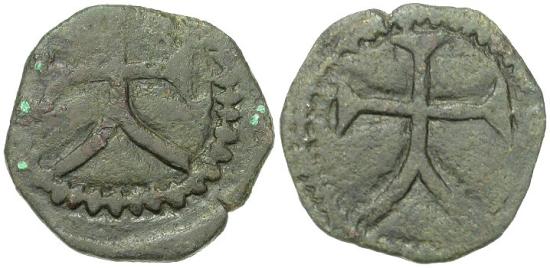More On Crusaders and the Talpiot Tomb
A few weeks ago we made a connection between some Templar coins and the façade of the Talpiot Jesus Family tomb. My good friend David Wray – a world renowned expert on coins – sent me this link to a special coin.
The coin belonged to the Knights of St. John, the Knights Hospitaller. These knights began as a monastic order who served as chaplains, doctors, protectors of pilgrims and, eventually, one of the strongest groups of knights in the Holy Land alongside the Templars. The Hospitallers built a hospital on the site of the Monastery of St. John the Baptist in Jerusalem. They placed great religious importance on skulls – as in the skull of John the Baptist.
Archaeologists determined that there was an ancient break-in into the Talpiot tomb. Based on the soil deposits that drifted into the tomb, they estimated that this had happened around the 11th century – the time of the Crusades. Inside, three skulls had been carefully placed – they had not fallen by accident, since they were perfectly intact – on the floor of the tomb, seemingly marking three points on a triangle. In other words, the cultists that entered the tomb of Jesus seemed to have performed a ritual involving three skulls. Put differently, the Hospitallers were into skulls, skulls were found in some kind of cultic order on the tomb’s floor and now comes a Hospitaller coin that evokes the tomb’s facade.
More than this, David Wray points out that the coin is rare. Also, it has significant lead content. Meaning, it could have been used not so much as a coin but as a special token of membership. Perhaps in a group whose cultic rituals have left their traces on the tomb’s floor. It seems to have been made by someone who was aware of the Talpiot tomb. Notice the similarity between the unique “upside down Y” on the Talpiot tomb and the “forked lower limb” on the Crusader coin. Notice how the top of the “Y” has been extended into a cross. Coincidence? I think not!


